This review was originally published on ZeldaChronicles (formerly known as ZeldaEurope) and got translated for this blog in 2022 by the same author. Nintendo had provided an early download code.
After spending over 180 hours with Hyrule Warriors it's time to give a judgement – right on time for yesterday's release. Does this crossover between The Legend of Zelda and Dynasty Warriors work? Is it fun? How are the characters? What's missing? This review will tell!
If you're not familiar with Hyrule Warriors as of yet, it's best to read my preview first. It will tell you how the game is played, how the controls look like, and what features there are. The review will now evaluate the game in different categories with a summary at the end. Spoilers about the later game are either avoided or put in spoiler boxes to be safe.
All images used in this review are from post-processed promotional material, which doesn't reflect the actual ingame graphics.
Zelda All-Stars
To play as Link, Zelda, or Ganondorf in Super Smash Bros. always was nice, but there was always the dream that Zelda would also get something of its own, where you can play as different characters. And Hyrule Warrios now makes this dream come true, where it uses the foundation of Dynasty Warriors to create a "Zelda All-Stars" game.
The focus of this were the following four titles: the original The Legend of Zelda, Ocarina of Time, Twilight Princess, and Skyward Sword. Those are the games from where the playable characters, the enemies, weapons, and battlefields stem from. Majora's Mask will also get a DLC pack later on, while A Link to the Past, Link's Awakening, and the The Wind Waker got some smaller references, like weapons, badges, or music. But don't expect anything from the other Zelda games, especially not the ones made by Capcom.
So, sadly Hyrule Warriors isn't the absolute all-stars title spanning the entire Zelda series; it's really just a start. But what it offers was put together with lots of love for the originals, where hopefully Hyrule Warriors will do the same for more Zelda games in the future.
Gameplay
Running all over the battlefield, whacking tons of enemies – this may sound very monotonous at first, but it can actually be rather addicting. It's fun to charge into enemy lines and clear a hundred foes with one Special Attack. It feels good to learn the combos and using them at the right time. It's not the most challenging game, far from it, but it's ideal to let off some steam after a hard day of work. And this game really manages to give you the feeling of being a true hero of Hyrule, more than any Zelda game ever did in the past.
Of course there aren't just the cannon fodders, but also some stronger enemies, where simple button mashing won't do the trick. They like to block, attack you aggressively, and demand a bit of skill, just like the bosses and mini-bosses in a Zelda game.
What's different here is the weak point system, where there's a gauge whenever an enemy is vulnerable. In case of overpowered foes or the giant bosses this even the only way of dealing some real damage on them, but this usually puts you in a situation where you simply circle the enemy, dodge their attacks, and wait for the right moment to strike. With some of the bosses, like King Dodongo, this can be quite annoying, because they love to take their time before they do the one attack where they are actually vulnerable.
Other than fighting stronger opponents, there is also a strategic factor to the gameplay. You're a one-man-army (or a one-woman-army) and the key to victory of each battle. You are the most important resource and there is demand for you everywhere. A keep is about to be conquered by the enemy in the west of the map, while someone needs healing on the opposite end, and assault troops are coming from the north. Of course you can't take care of all of this at the same time and this may be overwhelming at first. But you'll quickly learn to filter what needs your immediate attention and what doesn't. It's even part of the thrill to make the right decisions in all the turmoil. However, the bad side of this is that your allies are usually completely incompetent, where they normally can't get anything done on their own. It's all up to you, which can also be frustrating at times.
The battles are also scripted for the most part. This means that your enemies always follow the same plan, instead of truly reacting to your movements and actions. You can greatly influence the course of the battle with your own actions, of course, and some things are really up to chance, but for the most part the battle plays out the way how it was intended by its script. So, if you play the same battle multiple times, you will already know what's going to happen and can prepare accordingly. This can be fun, but of course it also makes things less interesting than going against a proper AI. The game mostly compensates this by offering lots and lots of different battle scenarios to go through, mainly in its Adventure Mode.
But none this will be news to anyone who has played Dynasty Warriors or similar games by Koei Tecmo before. What makes Hyrule Warriors more special are the different Zelda gameplay elements that went into all of this. You can cut grass or smash pots to find Rupees, hearts, Magic Jars, or similar goodies. You'll search for Gold Skulltulas and Pieces of Heart on the battlefield. You'll use potions to refill your heart meter. Bombs, Bow, Boomerang, and Hookshot are utilized to clear obstacles and to fight against the big bosses. Giant Bombchus crawl over the battlefield to destroy rocks or clear keeps. A Great Fairy waits at a Fairy Fountain to offer her aid in desperate situations. And don't mess with the Cuccos...
So, they've put quite some elements from Zelda into the gameplay, where it's not just a mere coating of Dynasty Warriors. Of course you shouldn't expect complex dungeons or any puzzles, it's still all about the battles. But just like Link's Crossbow Training isn't just a simple target shooter, Hyrule Warriors isn't just a simple Warriors game. The Zelda charm makes all the difference.
Story & Character Portrayal
Every battle in Legend Mode gets accompanied by either cutscenes or narrations with storyboards to put you in the right mood or to show you what's at stake. And as you would expect from Koei Tecmo, they've released a fan service firework, but the good kind. The story of Hyrule Warriors is all about bringing together characters from different eras, where Zelda fans are greeted by one highlight after the next. It's like a popcorn movie in many ways. The dialogues are short, there are some clichés, but it's a lot of fun. There are even some twists and turns towards the end that you might not expect.
In all of this you have to praise the portrayal of the characters themselves. Not only do they have really nice designs, but the behavior and interactions all feel very faithful to the originals and even surpass them in many ways. A good example would be Ganondorf, who never has been as "badass" as in this game and also combines different aspects of all his incarnations, even aspects of Demise. Or Impa is fantastic as well, even though she seems a little naive at times in her interactions with Sheik, but all in all she's the type of ally you want to have on your side. When Zelda fans think of Impa in the future, it will be her version from Hyrule Warriors that comes to mind.
But all the characters in the game are as well-made. Link looks great with his new scarf and even comes with a little moral to his story. Princess Zelda is simply charming, Midna is very cool, and Fi's percentages may even make you laugh in this game. And all the interactions between the characters, both during cutscenes and the battles, are splendid and sometimes also quite funny. It's of note how the developers were Zelda fans themselves, who truly wanted to create something for other fans. And they've succeeded.
It's not some intelligent and thought-provoking epic by any means, of course, but this wasn't the goal anyway. But even with the simple goal of bringing everyone together, there are some plot holes here and there, for example...
Other than the familiar faces, Hyrule Warriors also comes with four original characters of its own: Lana, Cia, Volga, and Wizzro.
Lana is a sorceress, where her design seems to be somewhat influenced by the three Oracles, while she also borrows from Saria with one of her combat styles (the Deku Stick). She's a central character to the story, where some female fans might be able to identify with her a bit, given that you like to be a cheery pop idol. This character got a lot of criticism from fans in advance for her over-the-topness, but overall she works quite well for this game's story, where she is the most important guide for the heroes. And she does have a sad background story, so don't be fooled by her appearance.
Much cooler are the three new villains, however, where their designs got mainly inspired by enemies from Ocarina of Time and other past Zelda games. The most obvious example is probably Volga, who is basically a human incarnation of Volvagia in this game. They are also somewhat reminiscent of the villain trio from Oracle of Ages & Seasons – Veran, Onox, and Vire.
Their design influences aside, they all work very well as villains in their own right. The sexy and seductive Cia is obsessed with Link, where she wants to possess the hero's soul. But she is also someone who observes all times, giving her an edge over her enemies. Volga is an absolute powerhouse, who will offer you some tough fights throughout the game. Wizzro always tries to deceive the heroes with tricks and illusions, where his cunningness can also be funny. And his background story, where he originated from the rings in The Legend of Zelda, is quite fascinating.
(These three villains will also become playable in an update on October 16th!)
Graphics & Sound
Let's just say that the graphics are very purposive, which means that the focus is on the characters and the action. The character models all look great and have nice animations. The fighting effects are fantastic as well – which is important, because you will see those a lot, where you shouldn't look your fill so quickly. Koei Tecmo also understands to put hundreds of animated enemies on the screen without the performance being terrible.
However, what went into the combat and characters was saved in the environments, which are completely devoid of details and rarely come with pretty textures. Of course this isn't really a game where you go sightseeing – you might not even notice some of the details that are actually there. But if you take the time, don't expect to find beautiful and breathtaking landscapes, because there aren't any.
At least the sound is great for the most part. Some sound effects were directly taken from a variety of Zelda games, mainly the 3D ones, where you can't really go wrong with that. The "voices" of the characters got all recorded for this game, but it all sounds very authentic, where it even seems like they got the same old voice actors in some cases.
There is no actual voice acting, however. Well, there is the female narrator, who will tell you some story parts in a beautiful voice, but other than that you'll get the usual noises. Maybe Koei Tecmo should have dared to try something more here, but it's not that you can blame them for staying true to the conventions of the series. In the least you'll still get the gibberish of Midna and Fi, while all other characters offer a good impression via the usual noises, just like classic 3D Zelda.
While the lack of voice acting may be disappointing, the music is probably not. It rocks, quite literally, because Koei Tecmo loves to put the sounds of guitars and drums into their action, which is very unusual for Zelda, but works quite well for this game and gets nicely combined with classical instruments. And the majority of the songs are just super motivating, where one of the highlights is "Eclipse of the Sun" (the song from Lana's trailer), which gets played during your first battle at the Valley of Seers (Lanayru Valley) and is simply perfect for this mission.
Some old songs from the Zelda series also got remixed, where you might not even recognize some of them. A good example is the classic "House" melody from Ocarina of Time, which got newly interpreted with trumpets as a march music for battle preparations.
However, some songs in this game are awfully repetitive and then even get played continuously. A good example is the song "A Great Evil", which gets played during the main campaign whenever there is impending danger. But the worst offender is with all certainty "Under Siege", which gets played all the time during Adventure Mode. That's just very disappointing, because this game has so many great songs to offer, where instead they prefer to play the same five-second-loop melody. But if you want to listen to a song of your choice, there is a music gallery for this.
Controls & Interface
As mentioned in the preview, the controls should be very intuitive for Zelda fans, where there is even a special Zelda button layout, where you can dodge with A and attack with B. The current version of the game (1.2.1) even let's you freely modify your controls, where this should leave nothing left to desire.
Only swapping between the items, which is done via the D-pad or touchscreen, is somewhat inconvenient, because it can't be done easily on the fly. You either have to stand still or take your entire right hand off, which can be troublesome in frantic situations that require you to change your current item.
Another problem came with the targeting, which usually goes for the strongest enemy first. This isn't wrong in principle, but sometimes you just want to target what's right in front of you and then it's annoying when the camera turns into a different direction. Swapping targets also doesn't always work intuitively, especially with multiple stronger enemies around. But the worst part is that the camera may go behind objects or walls while targeting, in which case your view gets blocked.
You can play via the Wii U GamePad, where you can switch between TV and GamePad screen on the press of a button. When you play on the TV, however, the GamePad screen itself doesn't prove itself very useful. You can only see the life energy of your most important allies and the latest battle log entries.
In the very least it should have offered a larger view of the map, which is crucial to the game, because it provides all the important information about troop movements. To have the larger version from the pause menu visible at all times, where you can also see the positions of your major allies, would have been very valuable. In addition, it should show you the elapsed time, where this is always important in Adventure Mode.
The way it is now you have to keep pausing the game to learn how much time you have left, where your allies are, or how much health they actually have left in case they need saving. And with the Wii U GamePad all this information could have been offered comfortably on the fly. Also, the contrast of the text boxes is not high enough, where it can be hard to read, in which case you also have to pause and go back into the battle log to not miss anything important.
While it's still advised to use the Wii U GamePad or a Pro Controller, you can also use a Wii Remote and Nunchuk. In this case you have to swing the Wii Remote to perform normal attacks, which is far from ideal. But it's nice to have and still better than the support for a Classic Controller (Pro) – there is none, despite the fact that it has the same button layout as the Pro Controller.
Cooperative Multiplayer
What makes all these controller options actually important is the multiplayer, where Hyrule Warriors offers the possibility to add a second player before every battle in any of the game modes. (Only the very first battle has to be played alone, afterwards the coop mode is unlocked.) For this the supporting player gets to choose from any of the available characters, which gives you some options that you may not have otherwise.
For some this may be the only true way of playing a Warriors game, because it can be a lot of fun to dominate the battlefield together. It's also a huge advantage, because you can focus on two problems at the same time. Plus, it looks really cool when a weak point attack gets performed by two fighters at once.
One player uses the GamePad to play and the other the TV screen. You can choose this freely, but there is no split screen mode. Also, the performance is really bad during coop play. Basically everything gets halved: resolution, frame rate, even the number of enemies. The Wii U really struggles with this, which doesn't mean it's not playable, but it's messy when compared to the singleplayer experience.
Theoretically, this wouldn't be an issue with an online coop mode, where every player gets their own Wii U, but that's missing completely. Well, Warriors Orochi 3 on Wii U had an online mode, which apparently didn't run so well and got a lot of criticism for it, but to drop this completely for Hyrule Warriors instead of optimizing things was certainly a mistake, especially since some players might love to play this with friends online.
Playable Characters
If there's one reason to get this game, it's without a doubt the opportunity to play other characters from the Zelda franchise. If you always wanted to play as Princess Zelda, Midna, Darunia, or even Ganondorf, then this game will entertain you. So, let's take a look at the full list of characters that caome with the main game, together with their weapon types:
- Link (Hylian Sword, Magic Rod, Gauntlets, ???)
- Impa (Giant Blade, Naginata)
- Sheik (Harp)
- Lana (Book of Sorcery, Spear, Summoning Gate)
- Zelda (Rapier, Baton)
- Ganondorf (Great Swords)
- Darunia (Hammer)
- Ruto (Zora Scale)
- Agitha (Parasol)
- Midna (Shackle)
- Zant (Scimitars)
- Fi (Goddess Blade)
- Ghirahim (Demon Blade)
Those are 13 fighters in total with 20 different weapons (Link's fourth weapon type, which will be kept a secret here, as well as Lana's gate also bring some other characters and enemies from the game into the battle). This selection covers the most popular characters from the respective Zelda games, which are Ocarina of Time, Twilight Princess, and Skyward Sword, which includes some of the more common requests for Super Smash Bros., such as Midna, Ghirahim, or a Ganondorf who isn't a Captain Falcon clone. You always wanted to play as them? Well, in Hyrule Warriors you now can.
Only Agitha seems like an odd choice, who apparently had a huge fan inside the development team, but who also could smooth the way for other curious character choices in the future. And future characters there will be, starting with Koei Tecmo's villain trio – Cia, Volga, and Wizzro – via a free update on October 16th. In addition, one more character from Twilight Princess and two characters from Majora's Mask will became available via paid DLC packs in November and January, as well as new weapon types for existing characters.
So, the show will go on and the upcoming additions will take care of the most obvious omissions right now: the three new bad guys already in the game, as well as Majora's Mask. The only other omission, which stands out in what this game was trying to do, is probably Groose. Skyward Sword is the only era in the game with only one, instead of two supporting allies – Fi in this case. And one of the missions makes even use of the Groosenator, but the Groose himself isn't there, despite this forward pass. He would have been a very good fit and will certainly be missed by some fans.
Anyway, a game like this lends itself to expansions, where they could keep adding characters and things from all sorts of Zelda games in the future, whether this happens via DLC or sequels. Not everyone will like this, but even with this start of 13 fighters there is already enough to do. Each character gets his own level and heart meter, as well as a skill tree and at least one weapon, where every weapon has two upgrades to unlock. You can already spend many hours building a single character in this game.
All the characters and weapon types are also very rich in variety. That every character plays so differently is even the main reason why this game doesn't get boring so easily,. Not only does everyone have different combo and special attacks, but most characters also offer a special gimmick to be mastered, making them unique.
The different movesets are also full of references to the Zelda games and really well made. Koei Tecmo has done an amazing job to develop individual and fitting fighting styles for every character, where it's a lot of fun to give everything a try. Of course some are better than others, where everyone will have different preferences. But in this Link does definitely stand out with the highest number of different weapons and some of the best allrounder toolkits. Well, he's still the hero after all...
Troops
Everyone of the playable characters can also appear as an opponent in battle, but for the most part the troops are made out of special units that roam over the battlefield or defend the outposts and keeps. While the giant bosses, which appear sparingly, are impressive and offer a challenge that feels close to what you would expect, the same can't be said about all the "cannon fodder". Most of these are a complete joke and quite honestly an insult to their counterparts from the Zelda series.
This is mainly about the small foes, like the many Bokoblins, Bulblins, and Stalchilds, where there are thousands and they understandably offer little resistance. It's part of the gameplay to simply mash through them in order to charge your meters. The real problem is with the captains, which are supposed to be stronger. Some of them arguably feel quite similar to the originals, like the Lizalfos and Dinolfos from Ocarina of Time, as well as the Moblins from Skyward Sword. Others are even undeniably stronger, like the Poes from Ocarina of Time or the Gibdos from Twilight Princess.
But then there are the outliers, who just feel wrong: the Stalfos from Ocarina of Time, the Bulblin Captains (which look like King Bulblin), the Darknuts from Twilight Princess, and the Stalmaster from Skyward Sword. Those were all formidable mini-bosses in their respective Zelda games, which became a complete pushover in Hyrule Warriors. That's just not okay, where it also would have been much more interesting to have some more challenging enemies in the game.
And there shouldn't just be more challenging enemies, but more enemies in general, because there is a severe lack of variety here. It's always the same five different types of troops, where the forces of good only send Hylian and Goron soldiers into battle. There are no Zora or Gerudo forces and even the knights on Skyloft are still portrayed as Hylian soldiers. Or Zant's forces could have employed the Shadow Beasts, but instead it's just Bulblins all the time. In a game that is all about fighting hordes of enemies, this is just bad and boring.
Battlefield Stages
There is a total of 14 different stages in Hyrule Warriors, which get used for the different scenarios in Legend Mode. Adventure Mode reuses these stages, where you often find yourself in shut off sections.
Anyway, for the most part this features familiar places from the 3D Zelda games, like Skyloft or the Gerudo Desert. However, you shouldn't expect accurate conversions, in some cases the places are hardly even recognizable. This is because the battlefield were designed with a certain width in mind, since the giant bosses are all mobile and a King Dodongo wants to fit through all doorways. And everything looks accordingly, where often the only things these stages have in common with the originals are the overall setting and some landmarks.
There are also some new locations, which you don't know from the Zelda series, where one of the highlights is the Temple of Souls. This is Cia's twisted palace, where everything is plastered with statues and paintings of different Links, which perfectly portrays her obsession with the hero.
Having different stages is also important to keep things interesting, just like the variety of playable characters. Each stage offers a unique setting and layout, where the whole atmosphere and the strategies can be quite different. This works very well in Legend Mode, where the majority of the scenarios have their own stage, so that no mission feels like the other. In Adventure Mode, however, you keep playing those 14 stages over and over again, where those locations can get stale very quickly and you'd wish that there are many more.
Modes & Progression
Legend Mode has a total of 18 story scenarios, where those all offer a good amount of entertainment, variety, and replay value. To obtain all the hidden Pieces of Heart, Heart Containers, and Gold Skulltulas you'll have to repeat every battle at least once, sometimes even more. You can also just replay them for fun or to grind levels, unlock weapon skills, and collect rare materials.
Thanks to the story, these scenarios have that certain something, which is usually motivating and offers a good flow. Plus, with the Free Mode you can replay each scenario with any of the unlocked characters. Going through the story once will take at least 10 hours, probably more, where it offers about the same length as your usual Zelda game.
But beating the story isn't where the game ends, in fact it's just starting and invites you to explore its extensive Adventure Mode with its 133 missions. This is where you'll unlock most of the additional weapon types and upgrades, as well as Pieces of Heart, Heart Containers, and Gold Skulltulas.
In addition, four more characters can be unlocked in Adventure Mode, though this isn't really a good thing, because the way it is you aren't able to play as these characters in Legend Mode, which feels like a missed opportunity. Two of the heroes even become completely unimportant later in the story and only act as a replacement, should you play as certain characters.
Anyway, the missions in Adventure Mode come in two types: "Challenge Battles" and "Adventure Battles". In the former you're usually on your own and have to solve smaller tasks, like defeating a number of enemies. Some of those can be really fun, others not so much. For example there are the "All attacks are devastating!" missions, where both you and your opponents will go down from a single hit. This sounds interesting at first, but will simply result in you sniping everything with a bow after a while just to be safe, which isn't much fun after all.
The Adventure Battles are much more similar to the scenarios in Legend Mode, just without any story, where they seem like they were put together rather randomly. Creating scripts and cutscenes for this many battles probably was too much effort, but in the very least it would have been nice to get a small text to explain the scenario and maybe also something that respects the game's factions of good and evil. But the way it is you may wonder why Link and Ghirahim join forces to battle against Fi (even though some Zelda fans might understand the urge to do so), or why Zelda is fighting against Sheik. It's all very motley, where Adventure Mode is mainly there to keep you occupied.
At least you're constantly rewarded. Once all the characters have been unlocked, you can focus on building and upgrading their weapons. The third tiers are not only quite powerful, they all look great and also offer some nice references to the Zelda classics. In addition, you'll be collecting Gold Skulltulas, more hearts for all your characters, and materials, where there is always a reason to go into the next battle.
It's a self-justifying gameplay loop, however, where you're getting things to get more things. And there can also be some frustration, because to earn most of the rewards you'll need an "A rank", where this rank is based on the K.O.s, your time, and the amount of damage you took. For the latter it makes collecting any additional Heart Containers completely pointless, because you are usually not allowed to take more than ten hearts of damage anyway, which is what everyone has right at the start of the game.
Difficulty
It's really all about the levels. The difficulty level of every Adventure Mode battle is fixed, where sometimes you will jump in at the deep end, because the enemies are way too strong. A Moblin then may cause eight hearts of damage with a single blow, while he takes very little damage himself. Then you'll need to level up, but should you be over-leveled a mission also may become too easy. So, your experience really depends on your character's level, where it would have been good to see a recommended level for every mission. (The Network Links actually have those, which are randomly generated battles gotten via friends).
In Legend Mode you can initially choose between three difficulty levels: Easy, Normal, and Hard. This affects how aggressive the enemies are, how much damage you do, and how much damage you take. Those values are all still based on your current level, so even the hard difficulty will become easy eventually, once your level is high enough. And this can be satisfying, where you can truly feel the growth of your characters, but at the same time this can completely remove the challenge in all missions where you are over-leveled.
That's probably why there is an unlockable fourth difficulty, called "Hero". In here you will have a tough time even at level 99 for a good challenge. But the game lacks something in between. When you're characters are around level 60 or 70, then the "Hard" difficulty will be way too easy, while "Hero" might still just be overwhelming.
Length
Should you decide to complete this game, then you will be occupied for a long time, maybe even up to 200 hours. This includes grinding, however, like leveling your characters, in some cases even to the maximum. Certain battles also want to be played multiple times in order to complete everything, usually because of the second Gold Skulltulas. So, be ready for lots of busy work. Also, most of your time will be spent in Adventure Mode, while Legend Mode only takes up about 10% of the game.
But this is also a game that can be enjoyed in small doses. Battles in Legend Mode usually take between 15 and 30 minutes, while battles in Adventure Mode were designed to be beaten in ten minutes or less, where this is ideal to be played in between. That's not something you usually do with a Zelda game and unlike a Zelda, where you may put it aside for longer time after completing it, a title like Hyrule Warriors can accompany you for many months.
Conclusion
While there are quite some things to criticize about Hyrule Warriors, it doesn't change the most important fact about this game: it's fun! It's fun to play as different characters and it's fun to take out hordes of monsters with them, where with this Hyrule Warriors is also the perfect supplement to the Zelda series. It's a solid start for a new spin-off series, but one that leaves a lot of boxes unchecked for the future.
The design of all the playable characters is also fantastic, where they are the main reason to recommend Hyrule Warriors to all Zelda fans. And if this type of gameplay is for you, then you will be able to spend a long time with it.
The Good:
- Excellent Zelda action game
- Fantastic character and weapon design
- Diverse cast of playable characters
- Up to 200 hours of game time
- Lots to unlock and collect
- Good integration of Zelda gameplay elements
- Intuitive Zelda controls
- Entertaining story and cutscenes
- Rocking soundtrack
- Addicting action
The Bad:
- Lots of unfulfilled potential
- Adventure Mode puts quantity over quality
- Obscure difficulty levels
- Ugly environments
- Pathetic troops with little variety
- Combat too focused on weak point system
- No online coop mode / local coop with bad performance
- Some camera issues while targeting
- No good use of the touchscreen
- No support for Classic Controller


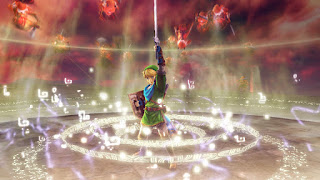
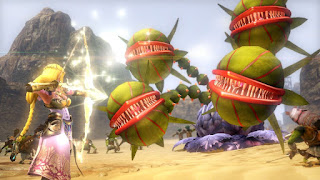
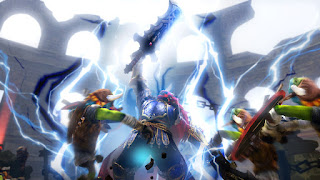
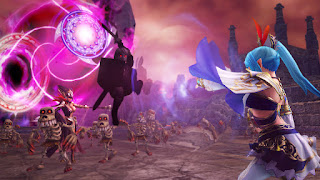


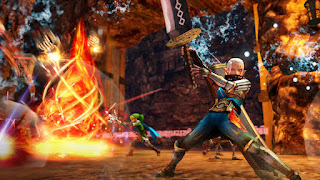


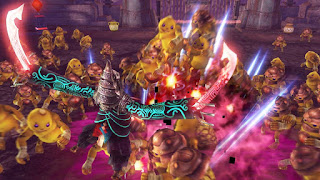
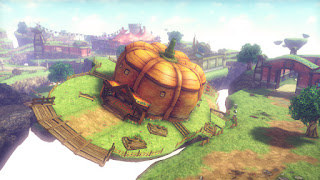


No comments:
Post a Comment